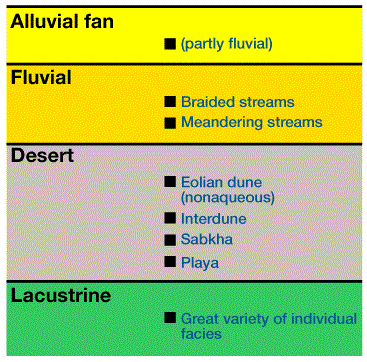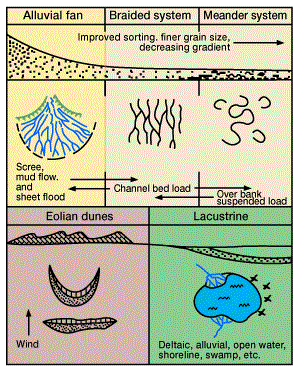In this course, exploration concepts of nonmarine sandstones reservoirs are examined and analyzed with tools to determine the reservoir environment.
General Considerations of Nonmarine Sandstones
Figure 1 outlines a classification of the major continental environments in which sand is being actively deposited.

Figure 2 offers a generalized illustration of these environments.

The first three of these are mainly deposited by streams and can be placed in an order that roughly corresponds to increasing distance from an upland sediment source area. They represent environments in which progressively finer, more water-worked sediment is moved and deposited. In contrast, eolian dune sands exist in a unique, nonaqueous setting, while lacustrine environments often combine sedimentation regimes of many types, from deltas to submarine fans. Alluvial fans and braided streams are generally the higher energy aqueous environments, where lateral and vertical changes in lithology can occur suddenly and often. A number of interrelated factors determine whether channels meander or braid. In general, braided rivers form where gradient is relatively steep, discharge is occasional and heavy, and sediment supply is high. Meandering rivers are more characteristic where gradients are lower, discharge more perennial, and sediment is more fine-grained, with a higher proportion of silt and clay.
 Petro Shine The Place for Oil and Gas Professionals.
Petro Shine The Place for Oil and Gas Professionals.



